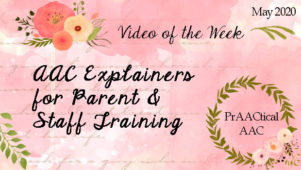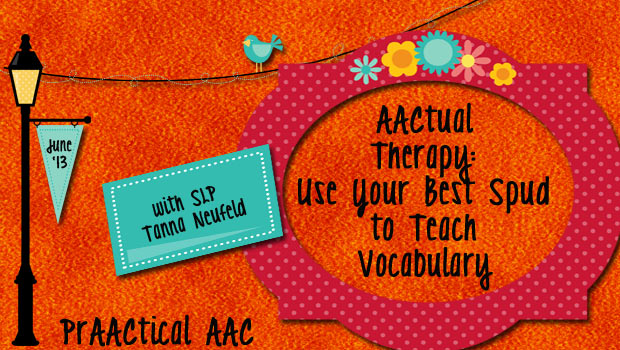Fun Friday- Commenting to the Max

Commenting is for everyone, even if they are beginning communicators and even if they need to learn. If you are teaching commenting to a learner who does not yet have this communication function, there has to be ‘buy in’ or interest through another communication function that is already known. So, for a learner who can ask for things they want or say ‘no’ to things they ‘don’t want’, you may need to form routines where they ask for something, comment, then can ask (and receive) again. Once the routine is established, you can add some more teaching and language facilitation strategies.
We have written about commenting before but when we saw this cool photo on Facebook, we just had to mention commenting again.
Go Ape! 10 Commenting Communication Temptations
More Ways to Teach Commenting
- Make it Meaningful to the Learner – Just talking about things may not be enough– the learner probably needs to DO, EXPERIENCE, & INTERACT to make commenting meaningful. For many learners, ‘talking’ for the sake of talking is not enough. If this is the case, you will then need to arrange activities that have a ‘product’ that the student likes. But, it is not about the ‘product’, it is about the process. Make a book, poster, figurine to help get the learner motivated. Make sure they can take it home the same day. The commenting can be about the item, things that happened while you were making it (process), and even all the people who might like to see it.
- Repetition with variety- Do lots of commenting in similar situations with different materials and in different situations with the same materials. Use any ‘unexpected opportunities’ to relate comments from one situation or one set of materials to other ones.
- Use Aided Language Input (ALI)- Of course use ALI, as much as possible.
- Make it BIG- Teaching commenting at the beginning needs to be really big, really fun, really interesting.
- Use all Language Modalities- Use commenting in reading, writing, listening, & communicating/talking.
- Use Core & Fringe Words- Core words will help commenting easily go between situations and materials. Add fringe vocabulary commenting when appropriate like in the photo below (if the learner loves cookie monster)
Enjoy the photo that inspired many commenting ideas:
Filed under: PrAACtical Thinking
Tagged With: commenting, communication functions
This post was written by Robin Parker






3 Comments
I thought I should comment on the commenting post! 🙂 Positive and negative commenting is standard operating procedure around our office. It’s easy to implement and fun too! I find our patients usually only need exposure to a few “Awesome!” and “That’s funny!” examples and they’re all smiles. Recorded messages for these high emotion comments makes the concept even more meaningful. Thank You for the discussion! I think what you two are doing is “Awesome!” Vicki
🙂 Love your comment on the commenting post!Great point about positive & negative commenting. Sometimes it is the negative comment that is great for a specific kid while other times it is the positive. I totally agree that modelling facilitates appreciation of the comment and an AAC mode of expression allows the learner to be the initiator of the comment. Thanks for continuing the discussion of a great topic and for your very kind words.
Yes, the negative commenting is critical, and unfortunately not as much fun. We have devices that literally yell (very high volume), “I HATE THAT!” and “I’m MAD!” Loud complaining always trumps physical violence. It has be truly amazing to see how quickly being able to complain diffuses otherwise nasty escalations of behaviors…not that our patients aren’t always THRILLED to be here with us! 🙂 I’ll stop commenting now, I think we may have reached critical mass on Comment Inception :)!